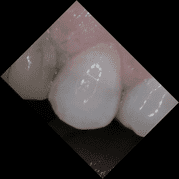Why are Dental X-rays Important?
- _
- Mar 27, 2019
- 2 min read
Updated: May 29, 2023

X-rays, also known as radiographs, are an essential part of any dental care treatment plan. They are diagnostic, but they can also be preventative by helping a dentist diagnose potential oral care issues in a patient’s mouth before they become a major problem.
X-rays, also known as radiographs, are an essential part of any dental care treatment plan. They are diagnostic, but they can also be preventative by helping a dentist diagnose potential oral care issues in a patient’s mouth, before they become a major problem. An x-ray is a type of energy that passes through soft tissues and is absorbed by dense tissues. Teeth and bone are very dense, so they absorb x-rays, while x-rays pass more easily through gums and cheeks. Modern day dentistry utilizes digital radiography, which has multiple benefits over conventional radiographs, including but not limited to, 70% less exposure to radiation, enhancement of dental image, less time and is environmentally friendly. The benefits of x-rays are well known. They help dental professionals diagnose cavities (tooth decay), gum disease, assess all the supporting structures in the bone that support teeth and some types of defects in bone which could be lesions, cysts, infections, etc. Teeth may appear within normal limits clinically, but upon exposing them to radiographs, the picture can be completely different. For example, in this routine checkup and cleaning appointment, the teeth appear without decay clinically, but by exposing the radiographs, we diagnosed an extensive amount of decay. Inter-proximal areas (surfaces where we floss), cannot be seen with the naked eye, so routine radiographs are very important for accurate and timely diagnosis. References https://www.colgate.com/en-ca/oral-health/procedur... https://www.canadianacademyofdentalhygiene.ca/blog... Pictures courtesy Colborne Family Dental 02/06/19


